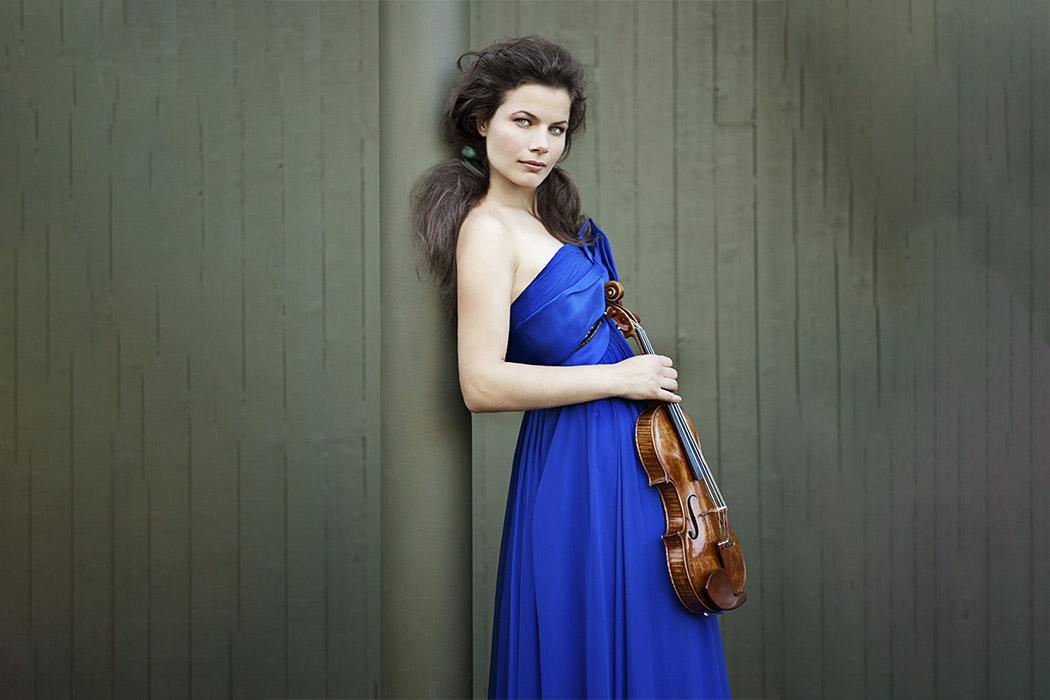The lobby of the Tennessee Theatre has probably seen every kind of audience response, but the intermission buzz at this weekend’s Knoxville Symphony Orchestra Masterworks concerts was a little more animated than usual. Even amidst the din of a hundred conversations, one could easily detect something approximating surprise and delight. While I’m sure the KSO will always settle for “delight” as a reaction, “surprise” can go either way. In this case, however, those emotions were distinctly positive for the two opening works on the program, George Walker’s Lyric for Strings and Florence Price’s Violin Concerto No. 1. In the case of both works, the audience was hearing them not only in a live performance from the KSO for the first time, but for most in the audience, for the first time ever—and they really liked what they heard.
What Walker and Price have in common is that they are both 20th Century African American composers whose music has been neglected by the classical music world, despite some decidedly landmark achievements. Walker (1922-2018) had a long and prolific career not only as composer, winning the Pulitzer Prize for Music in 1996 for Lilacs, but also as a pianist and educator. Price (1887-1953) had her Symphony in E Minor premiered by the Chicago Symphony Orchestra under conductor Frederick Stock in June of 1933, the first time an African-American woman had had a work performed by a major symphony orchestra. Given this, “surprise and delight” feels too little—and definitely too late.
In similar fashion to Samuel Barber’s Adagio for Strings, Walker’s 1946 Lyric for Strings originated as the slow movement of a string quartet, his String Quartet No. 1, that Walker dedicated to the memory of his grandmother. Maestro Aram Demirjian and the KSO strings captured the work’s rich lushness and lyrical flow, a flow beautifully broken by careful delineations of delicate repeating chords that practically imitate pensive sadness.
Although one recording of Price’s violin concertos does exist—a 2018 recording featuring violinist Er-Gene Kahng with Ryan Cockerham leading the Janácek Philharmonic Orchestra—I confess I was not prepared for the utter charm and simple sophistication of the Price Violin Concerto No. 1 in KSO’s offering this weekend with violinist Bella Hristova. Not only was Hristova’s lusciously romantic rendering a model of that charm and sophistication, it was a virtuosic example of creating atmosphere with string textures.
In the first movement particularly, Price makes references to some of the great European concertos of the 19th Century, both in spirit and in suggestion, but that borrowed spirit is contrasted with an Americana ebullience that is more idealism and optimism, than realism. Demirjian and Hristova found common ground amid the textural suggestions of both Main Street and unexpected side alleyways of dissonance and syncopation, with Hristova applying the double stop textures of bluesy jazz and folksy melodies as if paint on a canvas. The two cadenzas, notated by Price, were played exquisitely. And, like the finale of the first movement of Tchaikovsky’s concerto, Price created in hers an equally rousing finish that practically compels enthusiastic applause.
Hristova was quite at home in the second Andante movement, a movement that had elements of the church spiritual balanced with a jazzy melodic feel, darker and more dusty than in the opening movement. Adding to this were some poignant textures from the KSO woodwinds: flute (Jessica Petrasek), oboe (Claire Chenette), and bassoon (Jessica Findley Yang), plus bold blues statements from the trumpet (Phillip Chase Hawkins). The very definition of poignance was the movement’s ending in which the flute adds a suggestion of optimism to the final chord.
After the fresh revelations of the opening half of the concert, I wondered how the second half —Beethoven’s Symphony No. 3 (“Eroica”) might fare in contrast. After all, we are in the midst of the Beethoven250 celebration with performances coming fast and furious. Almost immediately, I felt more reassured as Demirjian began the symphony as Beethoven intended, the initial two chords setting the tempo rather than acting as preface for a different one as was the heavy-handed practice for many years.
As Demirjian has done with other Beethoven of late, he painted the performance mood with dynamics and textures rather than making statements of tempo variations. This gives the music a sense of drama, an urgency, that never pulls away from its purpose. For this reason, the second movement funeral march felt serious, but not ominously mournful in a way that more distinct pauses might have accomplished.
As expected, the third Scherzo movement came back to life after the funeral march with that partially restrained freneticism that explodes with sound. The movement’s rhythmic variations were fun as was the KSO horn trio’s (principal horn Jeffery Whaley) ensemble playing. The finale movement, variations on a theme that pull the listener in all directions, ends up with one of the classic Beethoven symphonic closings, one that plays with the rhythmic emotions of all involved. We can now add the “Eroica” to our list of the KSO’s well-played Beethoven—its been quite the 250th Birthday party so far.








